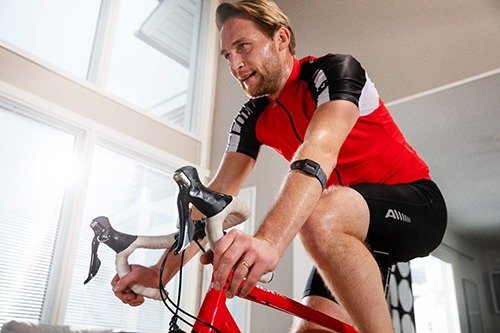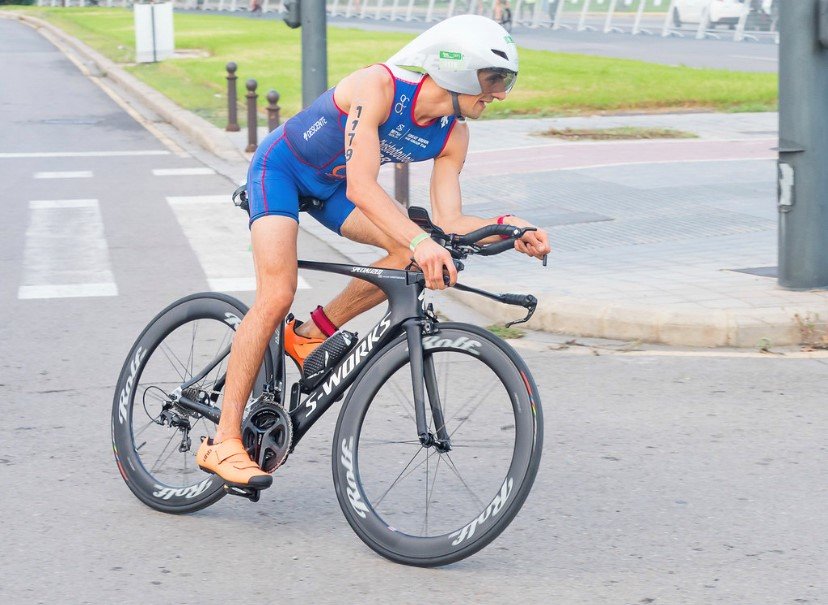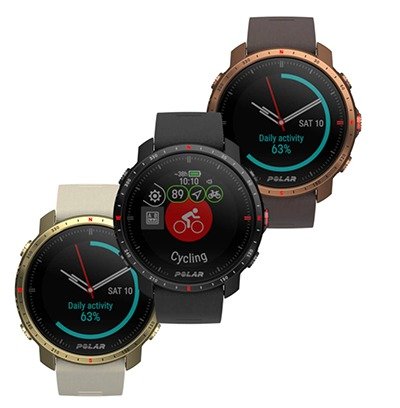Yiannis Christodoulu is a GB Triathlete and Aquathlete, Asics Frontrunner and Polar Ambassador. He was inspired by the 2012 London Olympics to do something and get fit after coming home from work and seeing Triathlon on the TV. With no sporting background prior and unable to swim, Yiannis started his journey. He had some long-term injuries and nearly gave up but combined with motivation and hard work, Yiannis has shown that anything is possible. Here he gives us his views on what has helped him to achieve his dreams.
What Polar product do you wear and do you use the same one across all cycling, running and swimming?
I use a few different Polar products depending on the activity. Firstly I use my H10 Sensor for Running, strength training and cycling. I use the Verity Sense for swimming as that’s easier and better for me to track in the pool. I run with the V2 and race with it as well as it fits nicely underneath my Wetsuit for Triathlon. However for swims and cycling I use the Polar Grit X Pro as I feel it more robust just in case I knock it. I do a lot of sea swimming when its warm so its robust for that.
Which features of this watch are most valuable to you and why?
There’s quite a few features I find valuable in the Grit X pro. Firstly I always find the feature that tells you if you are over training very valuable and you should use the science as an important part of your training. Of course recovery is key to improving. I also like to know the amount of training I do in zones so that’s a good feature and very helpful to me. One feature I have found very useful and I didn’t think I would was the daylight tool. That really helps so I know when there will be light to train. I also find the tests very important to use and to track progress throughout the year; I use the running, fitness, leg recovery and cycling tests. I always find the cycling tests the hardest and the ones I most dread but when they are done you feel so good afterwards. I also use the Orthostatic test regularly to see if I have recovered and that combined with tracking my sleep is very important; I would say this is the most valuable tool for me.
You have said previously that Cycling was your weaker sport. How have you improved your performance in this discipline?
Its important to work more on your weaker area because that’s where you gain the most improvement. For example if I spend more time on my strongest area of running, then I won’t gain much time so it’s better for me to gain much more time improving my weakest area. So I spend the most time each week working on the bike with 4 to 5 sessions and cutting the other training back a little. However that didn’t mean I was going hard every session, pretty much most of my weekly bike training was in power zone 2 and combining that with my Heart Rate sensor to also stay in zone 2. However hard days would be hard and I believe this is a much smarter way to train and it has paid off so far.

Monitor your heart rate with maximum precision using the H10 sensor and connect your heart rate to a variety of training devices
What tips would you give to any cyclist wanting to progress to the next level?
Train smartly with zone 2 training or 60% your heart rate max. Not only will this help your endurance it will make you more efficient and you burn fat as fuel which is a much longer lasting sustainable fuel than carbs. By doing this and implementing a good structured interval session in your program this will help you improve but you will find you recover from the easier sessions quickly as your legs wont be in bits and you will be able to hit those hard sessions hard and fresh. A bike fit will help massively too; that can provide free speed and keep the injuries to a minimal. Consistent training is key so if you are able to keep training well and not get injured as a result of smarter training then you will reap the rewards.
Why is training with heart rate so important?
For most people they are under the impression that they should go hard at all times because that will make them go faster and for example cycling at a slower pace will slow you down. Well this is not the case. You do not feel as tired the next day; in fact I can still do a hard session the following day if the day before was in zone 2. It has also helped me keep injuries away and not getting as many injuries as the years before I did heart rate training. I am still improving from this and I use different zones for different sessions that have been hugely important in my training and races. I find there are two key factors if you do heart rate training right and that it helps you not to over train and makes you efficient in the long term, which of course makes you faster. I find the heart rate never lies; sometimes you may think you feel fine but then when you go for a run your HR is in the same zone, it might be a lot higher then normal but your pace is slower, that’s your body telling you something isn’t right such as you are tired so if you stick in that zone you won’t feel rubbish afterwards if you ignored it.
Click here to explore the latest range of Polar products.



